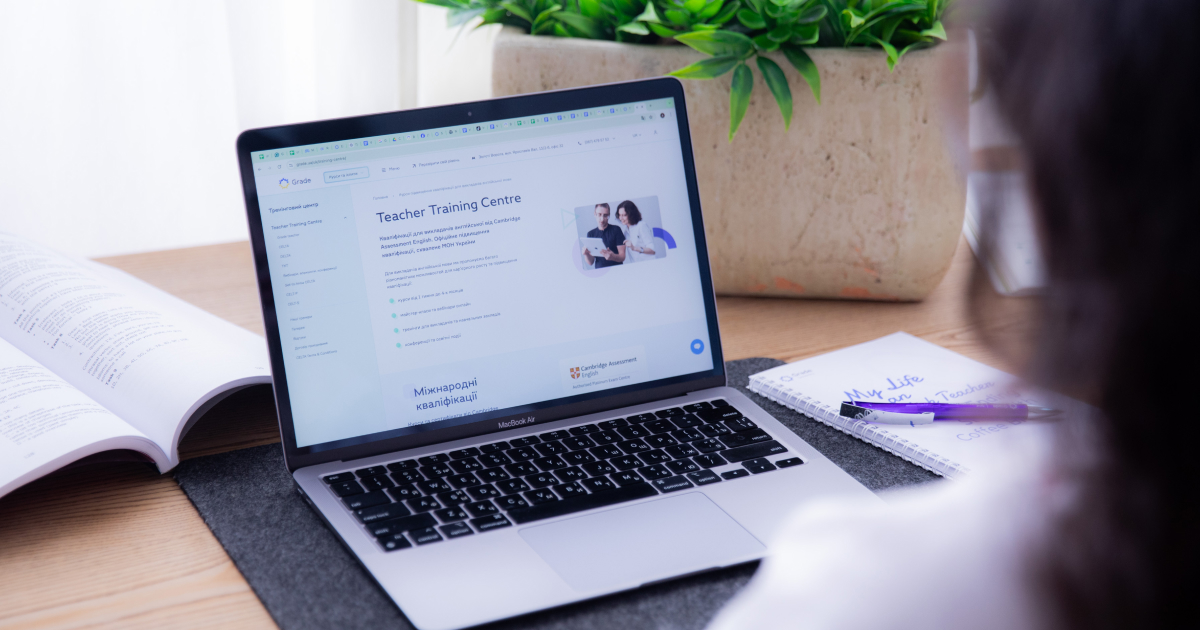Flipped Classroom: the future of effective learning?
- Tips & Strategies
- Methodology

09.10.2024
What if learning English could become an effective and, at the same time, enjoyable process?
Multisensory learning (MSL) offers just such an approach, using all the senses to memorise and master new material.
In an age where students' attention is constantly competing with numerous distractions, it offers a solution that makes learning more engaging.
Multisensory learning is a pedagogical approach that uses various sensory channels for perceiving and assimilating information.
Unlike traditional methods, which often focus on one or two channels (such as reading and listening), multisensory learning engages sight, hearing, touch, and movement simultaneously.

The main idea of this kind of learning is that information is better absorbed and remembered when it is received through multiple sensory channels simultaneously.
In everyday life, we rarely rely on just one sense: we look at the world, listen to sounds, touch objects, and move around.
So why not use this natural way of perceiving to learn?
In this article, we will explore how multisensory learning is applied in ELT and the advantages it brings.
Multisensory learning engages various sensory channels for more effective information assimilation.
Let’s take a detailed look at how each sensory channel can be used to enhance the learning process.
Visual aids play a crucial role in learning, as the human brain processes images faster and more efficiently than textual information.
In MSL, the visual channel can be utilised in the following ways:
1. Incorporating vivid images helps create associations between new words and visual representations.
For example, when learning vocabulary on topics such as animals, transport, or food, using relevant photographs significantly aids memorisation.
Use presentations in lessons to explain new material with visually appealing images.
2. Videos and animations bring the learning process to life, making it more interactive.
Videos on platforms like YouTube provide examples of language use in real situations, such as in podcasts or interviews.
3. Interactive whiteboards allow for real-time visualisation of information, creating diagrams and charts directly in the lesson.
For instance, if you are teaching online, you may have noticed that some online learning platforms offer virtual whiteboards where you can confidently write, draw, and explain new material.

What is ESL?
Find outThe auditory channel helps students develop listening and comprehension skills, which are critically important for language learning.
Here is how to use the auditory channel in MSL:
Listening to podcasts and audio recordings in English helps students get accustomed to different accents and intonations, improving their listening skills.
Choose podcasts that match the students' interests, as this will increase their motivation and engagement.
Using English songs helps students remember new words and phrases in context, improving their pronunciation and intonation.
You can create gap-fill exercises with songs.
For example, prepare the lyrics of a song with blanks instead of some words or phrases.
Let the students listen to the song and fill in the blanks with the words they hear.
You can also offer multiple-choice options to make the task easier.
Such an interactive lesson adds dynamism and interest, enhancing material retention.
How to teach English in Thailand?
The kinesthetic channel involves physical interaction and movement, which is particularly useful for active learners.
Role-playing dialogues and real-life situations allows students to apply language skills in context, building confidence and communication skills.
For example, you can role-play a situation in a café where students act as waiters and customers.
Each student receives a role and a script that they must follow, using the learned phrases and expressions.
This helps students use language in real situations, facilitating better material retention.
Including physical exercises and active games in lessons helps relieve tension and improve concentration.
For example, games like “Simon Says” in English allow students to be active and learn new commands simultaneously.

Using real-life objects helps students better understand and remember new words and concepts.
For example, learning the names of fruits and vegetables by using actual products.
Students can touch the products, which will help reinforce their names and characteristics in memory.
Cards with pictures and words, puzzles, or construction kits help students physically interact with the material, which enhances memorisation.
For example, you can use a construction set to create English words.
Each student or group of students receives a set of letters and picture cards.
Their task is to assemble a word from the letters that matches the image on the card.
This activity not only develops spelling skills but also encourages teamwork and creative thinking.

Listening styles and how to use them
Read moreWhen we learn, it is important not only to understand new information but also to remember it for a long time.
Multisensory learning aids in this by engaging multiple senses simultaneously.
For example, if a student sees a word, hears its pronunciation, and uses it in conversation or writing, the information is much better retained in memory.
This effectively creates several "anchors" that hold the information and make it more accessible for recall.
It is no secret that everyone has their own learning style.
Some people understand information better visually, some aurally, while others need to touch things.
Multisensory learning takes these differences into account and offers a variety of teaching methods suitable for all types of learners.
This helps each student find their own path to understanding and remembering material, thus making the learning process more individualised.

Imagine a lesson where you not only listen to a lecture but actively participate in various activities: watching videos, listening to music, playing games, and role-playing scenarios.
This is far more engaging than just sitting at a desk and reading a textbook.
Students become motivated and develop a desire to learn.
Multisensory learning helps develop language skills as well as many other useful abilities.
By working in groups, participating in role-plays, and completing creative tasks, students enhance their communication skills, critical thinking, and creativity.
For example, students can work together to solve real-life problems using new vocabulary, or create a project that requires both language and collaborative skills.
This makes learning more holistic and beneficial for students' overall development.
5 ESL speaking activities
Learning can be a stressful process, especially if students feel insecure or overwhelmed with information.
Multisensory learning helps create a more comfortable and supportive learning environment.
The variety of methods and materials allows students to choose the most convenient way of learning for them, which reduces stress and anxiety levels.
Moreover, physical activity and interactive tasks help relieve tension and improve overall well-being.
Thus, multisensory learning is a valuable tool in the arsenal of the modern teacher, which can significantly enrich the learning process and make it more effective for all participants.
Incorporating elements of multisensory learning into English lessons allows for the creation of a more dynamic and supportive educational environment where every student can find their path to success.
Kateryna Kuchynska
Author
Content Manager | Teacher of General English
Comments
Leave your comment